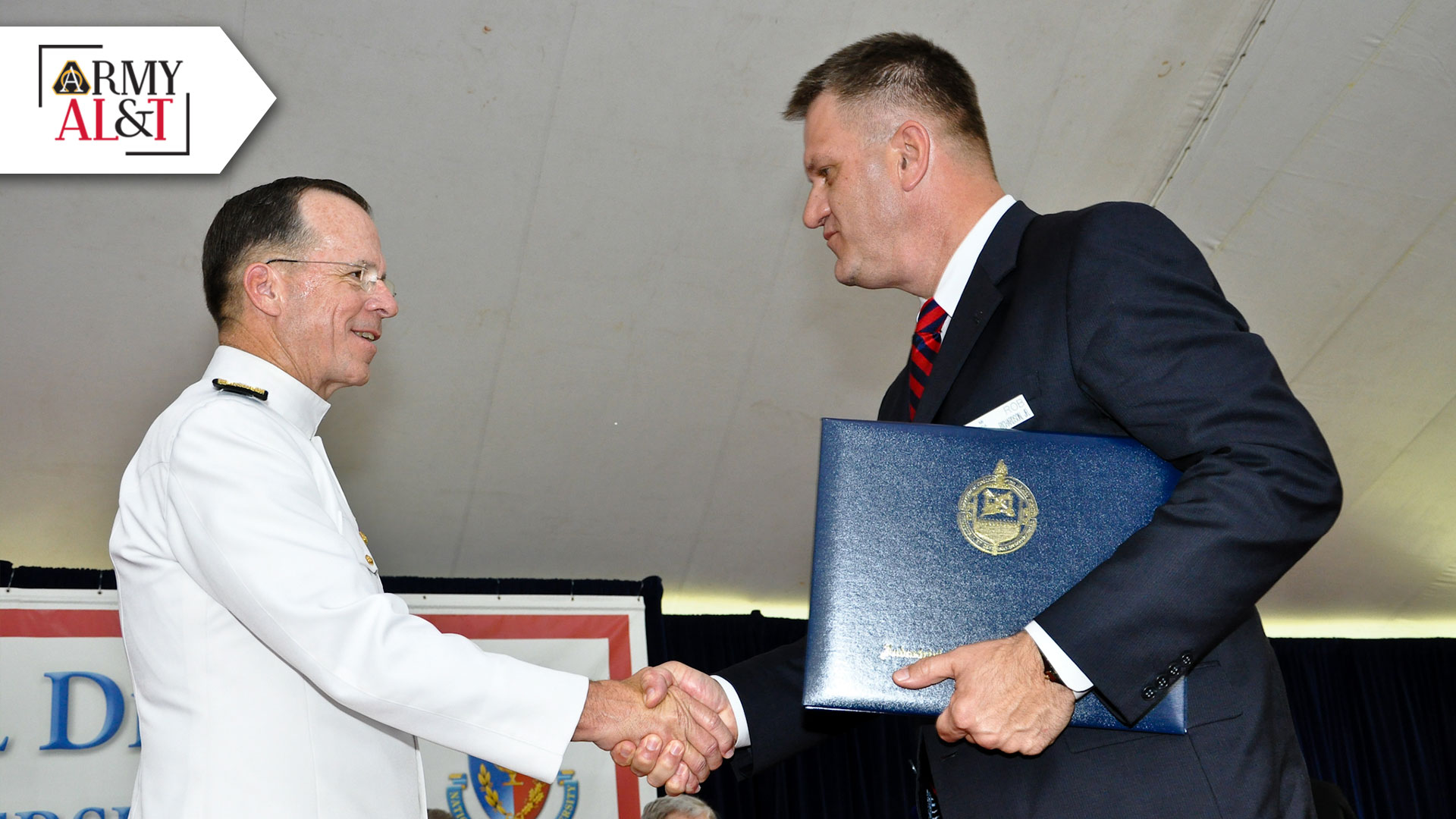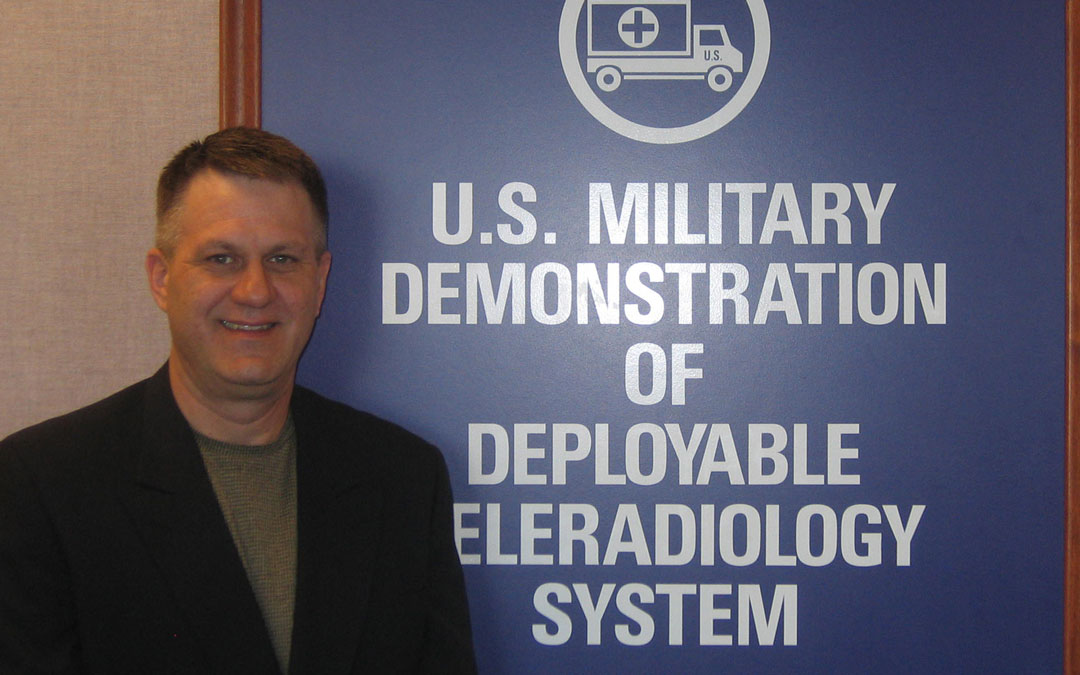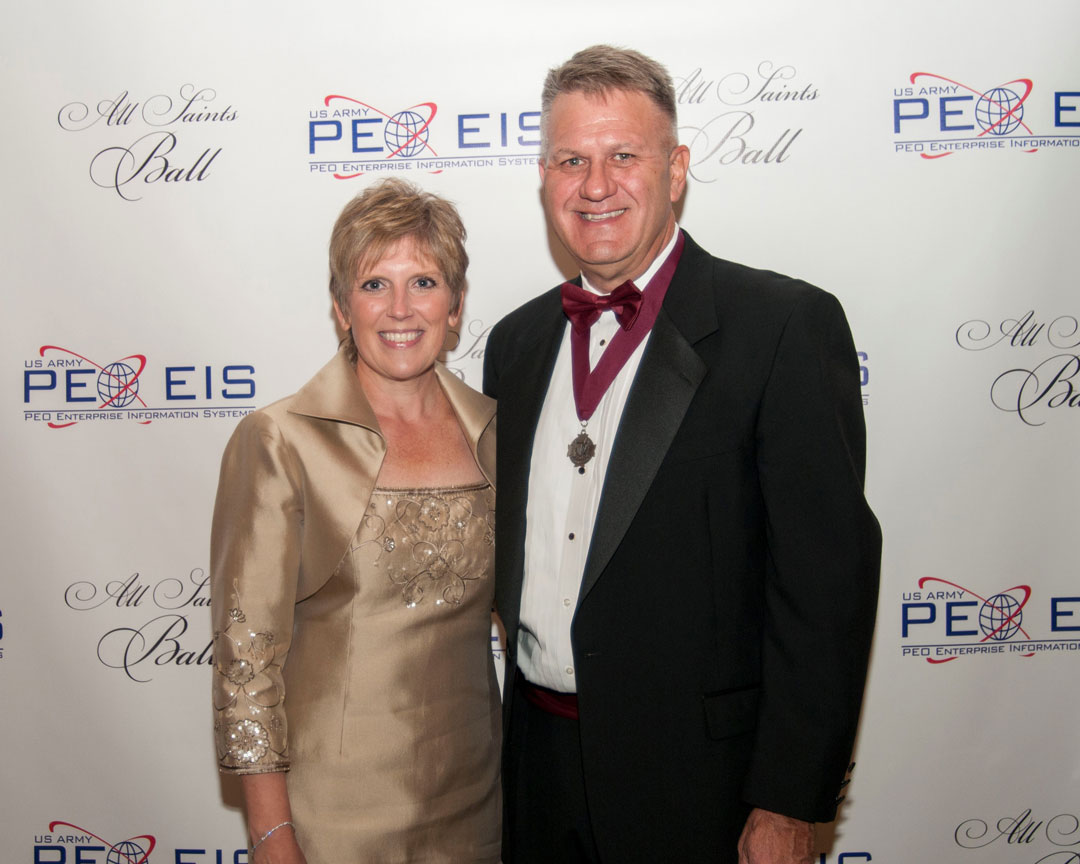
ROLL CALL: Adm. Mike Mullen, left, then chairman of the Joint Chiefs of Staff, congratulated the author at the National Defense University commencement exercise in June 2010. (Photo courtesy of the author)
FROM THE DIRECTOR OF
ACQUISITION CAREER MANAGEMENT
RONALD R. RICHARDSON JR.
Acquisition education and training can transform your life. I know. It did mine.

Ronald R. Richardson Jr., Director, U.S. Army Acquisition Support Center and Director, Acquisition Career Management
I am ecstatic to be joining the team as the new Director of Acquisition Career Management (DACM). It is my honor, and a high point of my career, to serve in a capacity that allows me to support people, especially those who choose to support the critical mission we have in the Army—to deploy, fight and win the nation’s wars.
I served in uniform for 10 years before transitioning to a civilian position and then to industry. I remained in the Army Reserves for another 15 years as an individual mobilization augmentee and a U.S. Military Academy at West Point Field Force admissions officer. It felt good to put on the uniform, even if only for a few days each month. I spent five years working in industry. And then on Sept. 11, 2001, I refocused my priorities and returned to government service.
I am an acquisition professional.
I’ve had the incredible opportunity to work for a large number of organizations and programs. My time with the Defense Health Agency was particularly meaningful. As the deputy program manager for the DOD Health Management System Modernization Program, I was able to see firsthand the personal aspect of what we were doing, especially in support of our veterans—seamlessly integrating records with the U.S. Department of Veterans Affairs and providing a comprehensive longitudinal record for every Soldier, Sailor, Airman and Marine, including our wounded warriors—supporting them from accession through transition.
I spent the past five years of my career, before becoming DACM and the director of the U.S. Army Acquisition Support Center, at the Program Executive Office (PEO) for Soldier, where I led acquisition streamlining and acquisition operations in support of the PEO. Throughout my career I have had the privilege to learn about and see the impacts of my work firsthand, but it was in that job at PEO Soldier where I was brought closest to that reality.
On Sept. 3, 2018, Staff Sgt. Steven McQueen of the 1st Security Force Assistance Brigade, while on deployment in Afghanistan, was struck in the back of the helmet with a 7.62×54 mm Russian round.
He survived with minor injuries.
On March 3, 2019, the damaged Enhanced Combat Helmet that McQueen was wearing that day in Afghanistan was returned to him at PEO Soldier as part of a personal protective equipment return ceremony. I was in attendance that day. I was able to see the direct impact that our team of acquisition professionals had on saving this Soldier’s life. I can’t think of any other career where one can have such an impact.

IN THE FIELD: The author in August 2004, when he was project director for Integrated Clinical Systems, at a demonstration of the Deployable Teleradiology System. (Photo courtesy of the author)
I’m also an acquisition practitioner.
My career has been all program management—managing programs in uniform, out of uniform and in industry. I hope to bring that broad perspective to this job. I attended the Industrial College of the Armed Forces (now called the Dwight D. Eisenhower School for National Security and Resource Strategy); I participated in the Senior Enterprise Talent Management program, and was a Senior Acquisition Course student. Those developmental and broadening experiences helped me make connections and exposed me to diverse perspectives beyond my existing world view. I believe that the programs offered through the DACM Office are an investment in our Army acquisition professionals; an investment that teaches discipline and coping skills, encourages diversity in thought, and results in better outcomes.
My experience attending the Industrial College of the Armed Forces was transformational. I attended classes and had discussions with professionals from our sister services, the Office of the Secretary of Defense and industry, as well as with foreign officers. These broad and diverse interactions completely opened my mind. I am grateful to the leaders I had at the time for encouraging me to briefly step aside from my job so that I could learn from others and evolve as an acquisition professional and leader. We need to continue to prioritize investments in our workforce such as these.

AN ACQUISITION TRADITION: The author and his wife, Nancy, attended the PEO for Enterprise Information Systems (EIS) All Saints Ball in October 2018. (Photo by Cecilia Tueros, PEO EIS)
Talent management is key to success.
I’ve always been laser-focused on getting kit into the hands of Soldiers. Whether it’s Soldier gear, tanks, helicopters, medical equipment or new hypersonic or directed-energy weapons, it’s our workforce that makes it happen. We need experienced leaders who are well-trained and in tune with current trends and best business practices. We need to be early adopters of new acquisition authorities and leverage every tool at our disposal to accelerate delivery of capability to the force. We need agile and adaptive professionals with solid acquisition acumen and well-developed critical thinking skills so we can pivot as conditions change.
We’re seeing some major shifts now as we transition the force with Back-to-Basics. We’re going to see changes to career fields, streamlining them to six functional areas that represent the basics of acquisition. We’re going to see changes in institutional training, shifting to a leaner, “just-in-time” certification structure that is intended to cover core competencies within each respective functional area, and an enhanced focus on the experiential component.
We’re updating our centralized selection list process and incorporating the Acquisition Leader Assessment Program (ALAP), which adds complexity for those leaders looking to take on challenging assignments. Through the ALAP, we’ll be able to further assess officers’ and civilians’ readiness to lead. Changes like these make our workforce more effective and efficient, and help to ensure we are setting up future Soldiers for success.
Throughout much of my career I have been on the receiving end of the information and opportunities that come out of the DACM Office. I give much credit to Craig Spisak and the DACM team for preparing me to assume the responsibilities of this position today, and I appreciate the support provided to the Army acquisition community. I am excited to wind up my career in the most important job I will ever have—taking care of our people.
Looking back on that personal protective equipment return ceremony at PEO Soldier, McQueen was joined by his family—his wife and three children, the youngest of which, at 10 months old, McQueen might never have met if not for that helmet. That is my reason and my reward for choosing the Army Acquisition Workforce. I look forward to helping you find your reward, too.







